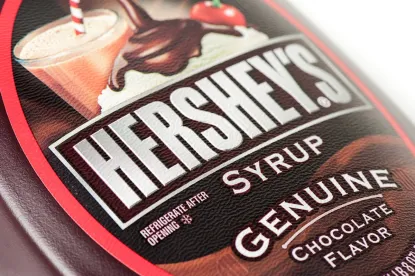-
On March 10, Hershey Company filed a motion to dismiss a consumer class action suit which claimed that its chocolate contained toxic substances. Hershey maintains that it “never promised, in words or substance, that its products were utterly lead- and cadmium- free,” just that they were safe to consume. See Eva Grausz v. The Hershey Company, case number 3:23-cv-00028, in the U.S. District Court for the Central District of California.
-
Hershey maintained that the plaintiffs failed to show an injury-in-fact, arguing that the suit does not allege that the bars purchased were contaminated; rather, plaintiffs rely on testing reported by the publication Consumer Reports (CR). “That CR detected traces of lead and cadmium in two or three product samples does not indicate that the chocolate bars plaintiff herself purchased contained those contaminants,” said Hershey. The CR study published in December 2022 tested 28 dark-chocolate bars. All candy tested contained both lead and cadmium, but 23 of them contained more than 0.5 micrograms of lead, more than 4.1 micrograms of cadmium, or both. To read more about the CR study, see our previous blog post here.
-
Hershey claims that the plaintiffs lack standing to bring a claim because CR did not test the particular bars purchased, and the study’s analysis states that results “can vary” from bar to bar. Alternatively, even if the candy consumers bought did contain lead and cadmium at the levels stipulated, they would still lack standing because the presence of heavy metals in low amounts do not render the food inedible or unsafe to consume.
-
Moreover, Hersey maintains, it’s a sad reality of “modern life” that lead and cadmium are omnipresent in the air, water and soil, making it impossible for anyone to make a product “absolutely free” of heavy metals. Accordingly, the company had never made that guarantee but at most implicitly promised the products were safe to consume.
-
Consumers claimed that they frequently purchased Lily’s Extremely Dark Chocolate 85% Cocoa, which is made by Hershey and tested at 143% of the maximum allowable dose level for lead in the state of California and 101% of the maximum allowable dose for cadmium. Other products named in the CR study included Hershey’s Special Dark Mildly Sweet and Lily’s Extra Dark 70% Cocoa.
-
Hershey is not the only company to face recent consumer actions for chocolate products as a result of the CR study. Earlier this month, chocolate makers Mondelez Global LLC, which manufactures Hu-branded chocolate, and Lindt & Sprungli North America Inc. were hit with proposed class actions in New York. See Newman v. Lindt & Sprungli (North America) Inc., case number 1:23-cv-01972, and Newman v. Mondelez Global LLC, case number 1:23-cv-01988, in the U.S. District Court for the Southern District of New York.
Lauren Haas, Frederick Stearns, and Emily Thomas also contributed to this article.






 />i
/>i
